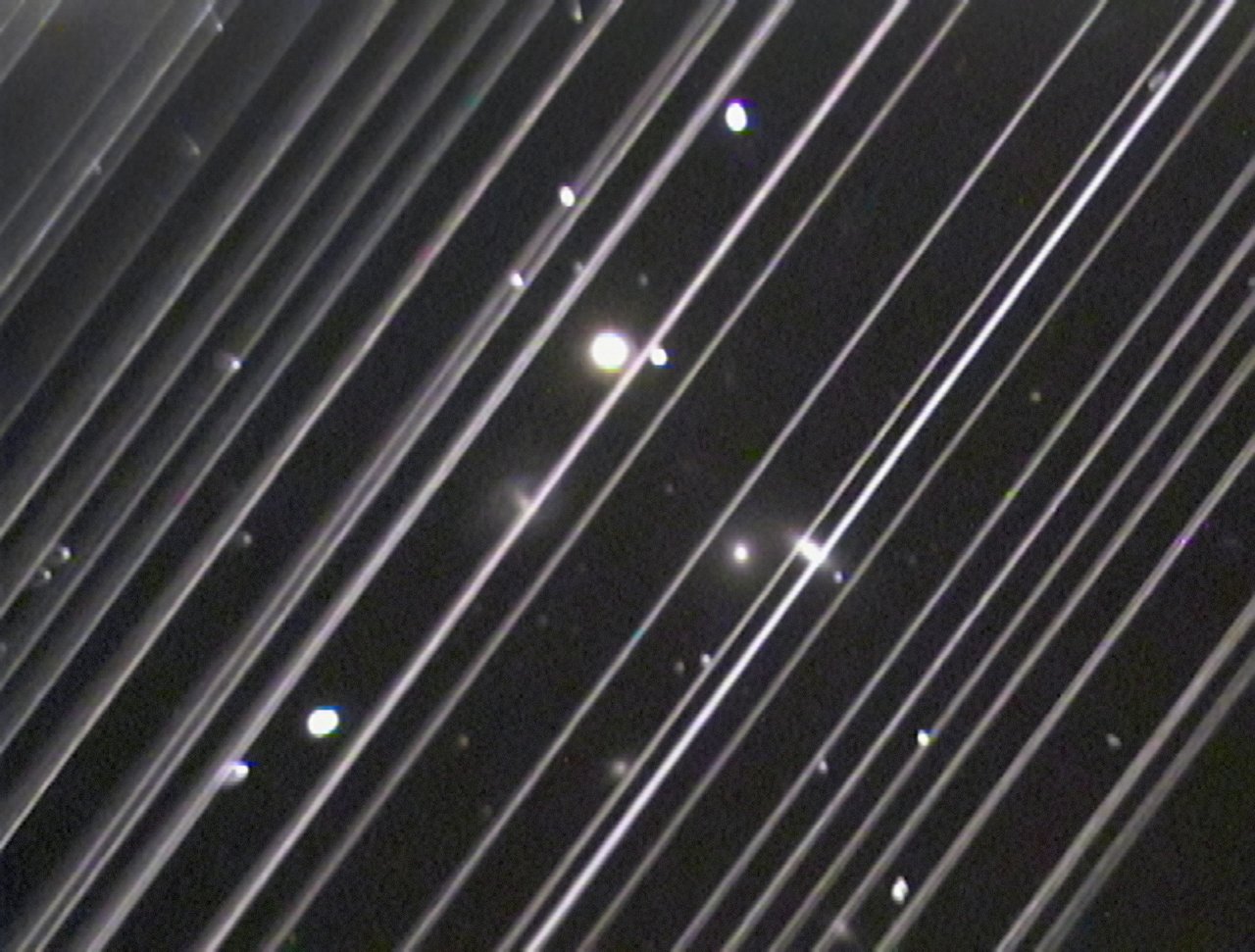
SpaceX launched its first set of 60 satellites last month, and astronomers have already raised concerns about the effect these and similar launches could have on our ability to view the stars. Now, the International Astronomical Union (IAU) has weighed in on the issue and underlined the potential problems to science that satellite launches could cause.
Light pollution is a serious problem for astronomers, as it makes it harder to see dim stars in the sky. Anyone who has lived in a busy and well-lit city knows that urban light pollution blocks the view of most stars. In fact, estimates state that around half of all Americans can barely see any stars in the sky at all.
When discussing light pollution, we are usually talking about light generated here on Earth, from streetlights and other sources on the surface. But the large number of satellites launched in the last decade has raised concerns about light pollution in the atmosphere and in the sky as well. In particular, satellite constellations, in which whole networks of satellites are launched together, are a source of worry.
The IAU raised two main concerns about the scientific impact of satellite constellation launches. First, they argue that the satellites will affect readings from highly sensitive telescopes like the Extremely Large Telescope. Because the satellites are made of reflective metal, they reflect light from the sun at sunrise and sunset and cause bright white lines to appear across telescope images. An example can be seen in the image above, which was captured by a telescope in Arizona a few days after the SpaceX satellite launch. This is detrimental to the telescopes’ abilities to gather accurate scientific data.
The second problem relates to radio interference. Radio signals are an important tool in astronomy, and are how the first image of a black hole was generated. Even though satellites are designed to avoid interference with the radio frequencies used in astronomy, having many satellites in a constellation giving off radio signals can cause problems.
In fairness to SpaceX, the IAU has acknowledged that the visual impact of the satellites is much higher in the first few days after the launch. The satellites have already grown less bright and will continue to fade as they reach their final orbital positions. But as the IAU points out, this is an unregulated frontier and governments and individuals should consider the potential scientific detriment to these kind of launches.
Editors' Recommendations
- Watch SpaceX fire Starship’s Raptor engines ahead of 4th test flight
- SpaceX Starlink internet heads to first cruise ships
- Watch SpaceX’s Crew Dragon thrusters guide it to space station
- SpaceX Crew-4 astronauts are on their way to the space station
- How to watch SpaceX Crew-4 astronauts launch to ISS




